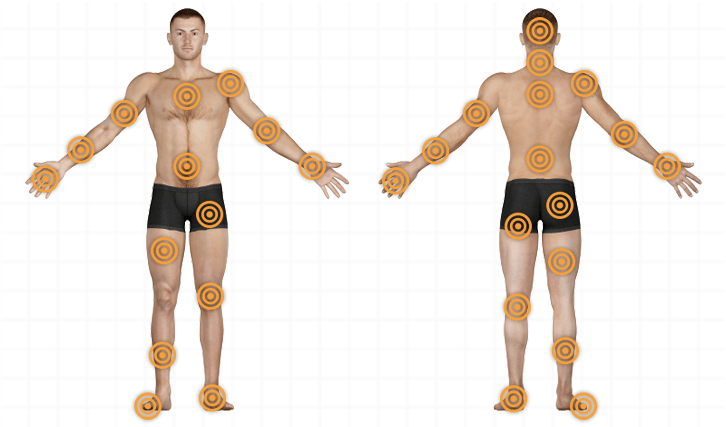Physiotherapy encyclopedia - e-Health widget
Version 2.0 - Professional
By adding our physiotherapy encyclopedia, your website becomes a source of information for your visitors. Simply place the encyclopedia on your website!
With this e-Health widget, your practice will benefit from the following options:
- Your own corporate identity
The encyclopedia is presented in the brand colors of your website. - Suitable for all screen sizes
Smartphones, tablets, laptops and desktop computers. - Easy to install
You can easily install the encyclopedia by simply pasting a fragment of code in your web page. - Informative
Your website becomes a source of information for physiotherapy complaints and disorders. - Effective
You can refer your clients to the information on your website.
Examples
Option 1. Place the list of articles on one page
Shoulder (example)
- Acromioclavicular injury
- Broken collarbone
- Bruised or broken rib
- Bruising
- CANS (complaints of arm, neck and/or shoulder)
- Cervical posture syndrome
- Costochondritis
- Fibromyalgia
- Frozen shoulder
- Heart disease
- Impingement syndrome
- Internal impingement
- Joint mouse
- Myositis ossificans
- Osteoarthritis of the shoulder
- Osteochondritis dissecans
- Proximal biceps injury
- Pulmonary embolism
- Rheumatoid arthritis
- Rotator cuff injury
- SLAP lesion
- Shoulder instability
- Shoulder subluxation
- Subscapularis tendinopathy
- Thoracic outlet syndrome
- Tietze's syndrome
Available areas of the body
Shoulder, Upper Arm, Elbow, Forearm, Wrist, Hand, Hip, Buttock, Thigh, Knee, Calf, Ankle, Foot, Abdomen, Upper Back, Lower Back, Chest, Neck/Head.
The above example shows only the shoulder. The other areas of the body work in the same way.
Option 2. Create separate pages for each condition
Acromioclavicular injury:
The acromioclavicular joint, also called the "AC joint", forms the connection between the clavicle (collarbone) and the top of the shoulder blade. Dislocation of this joint may cause damage to the ligaments and capsules that stabilize the joint.
Injuries to the AC joint are common in cyclists and judokas. They are at increased risk of falling onto the top of the shoulder. This is a classic cause of acromioclavicular dislocation (luxation).
Are you interested?
Please contact us or just register your practice right now.


